- Pottery
- Small Maria Martinez Black Ware Pot
Small Maria Martinez Black Ware Pot
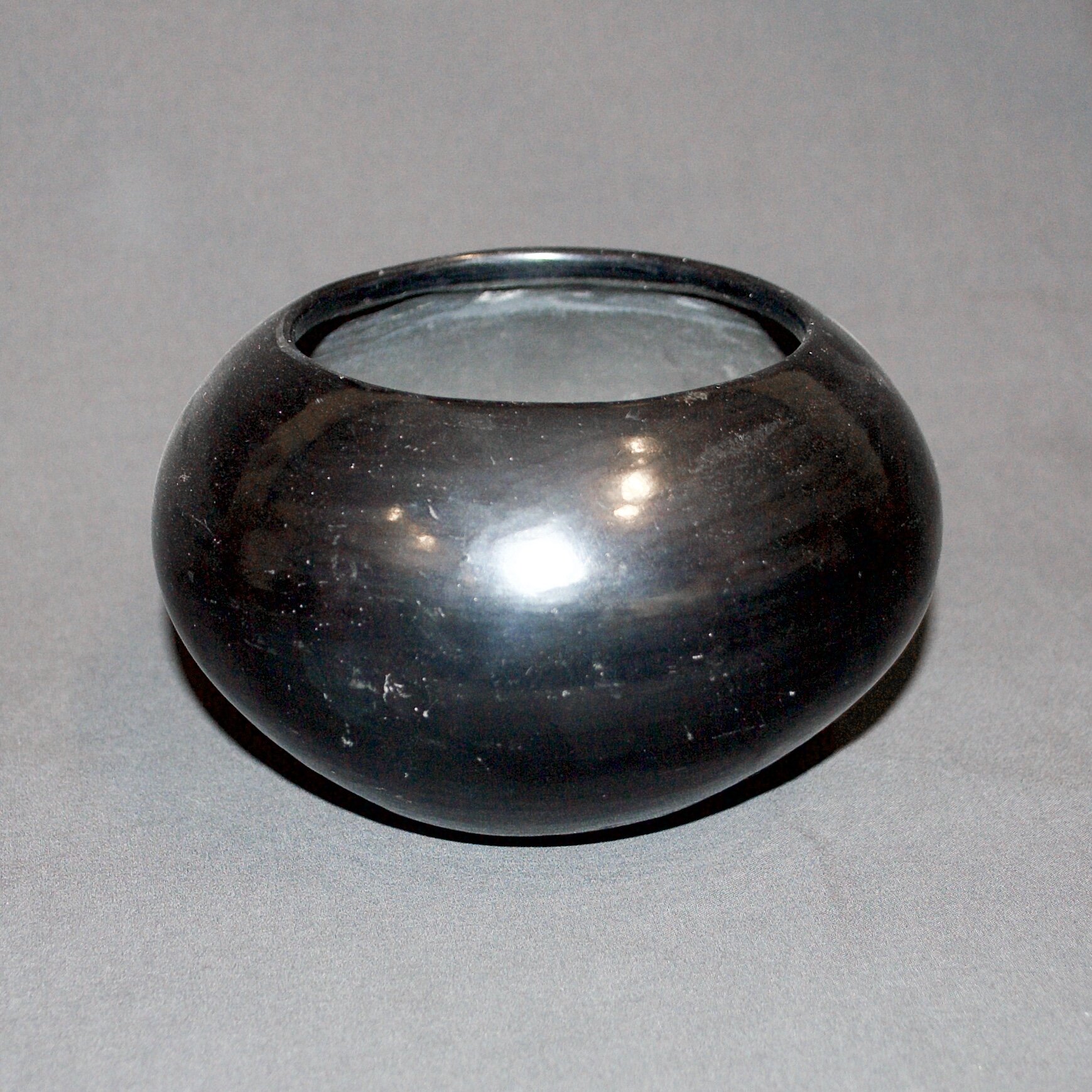
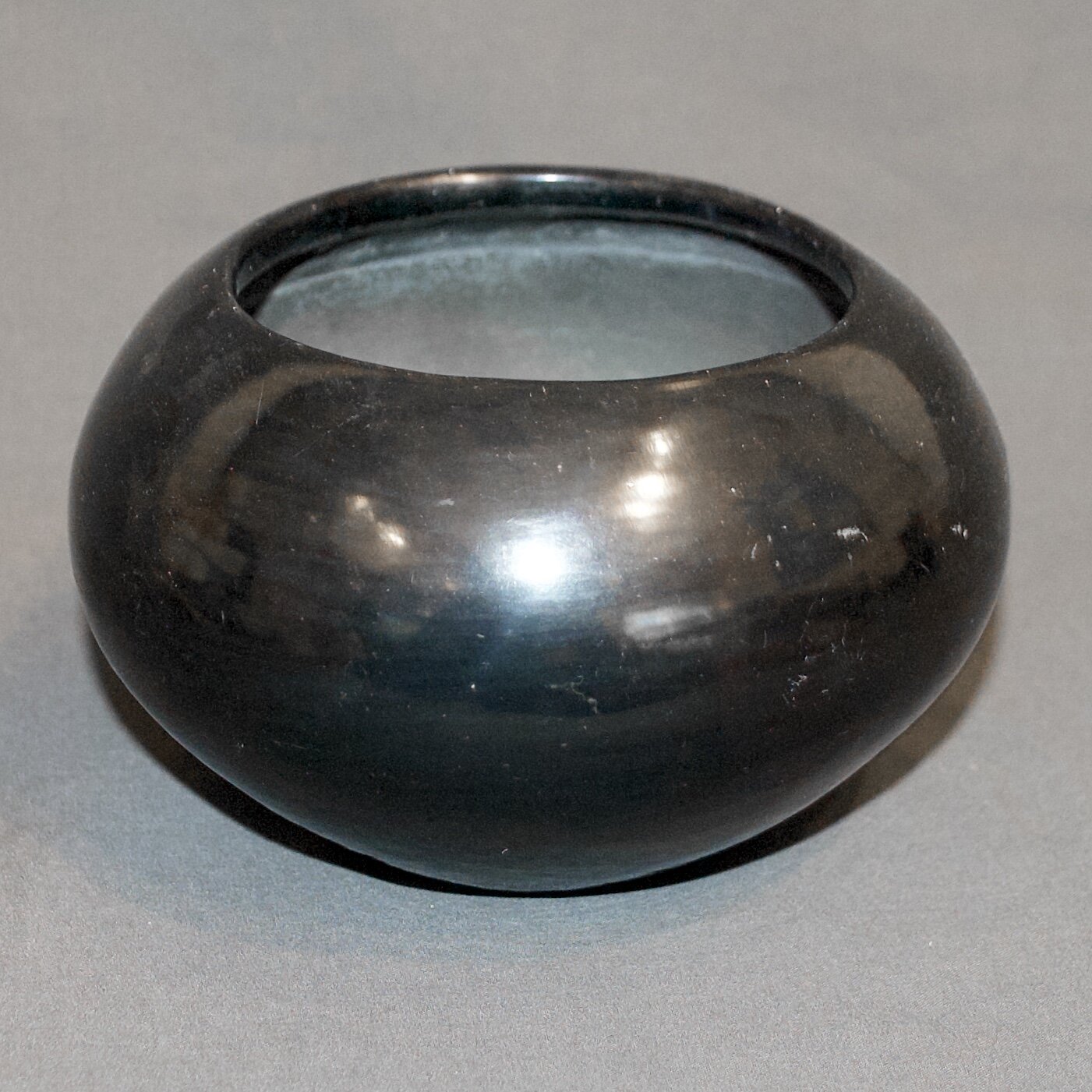
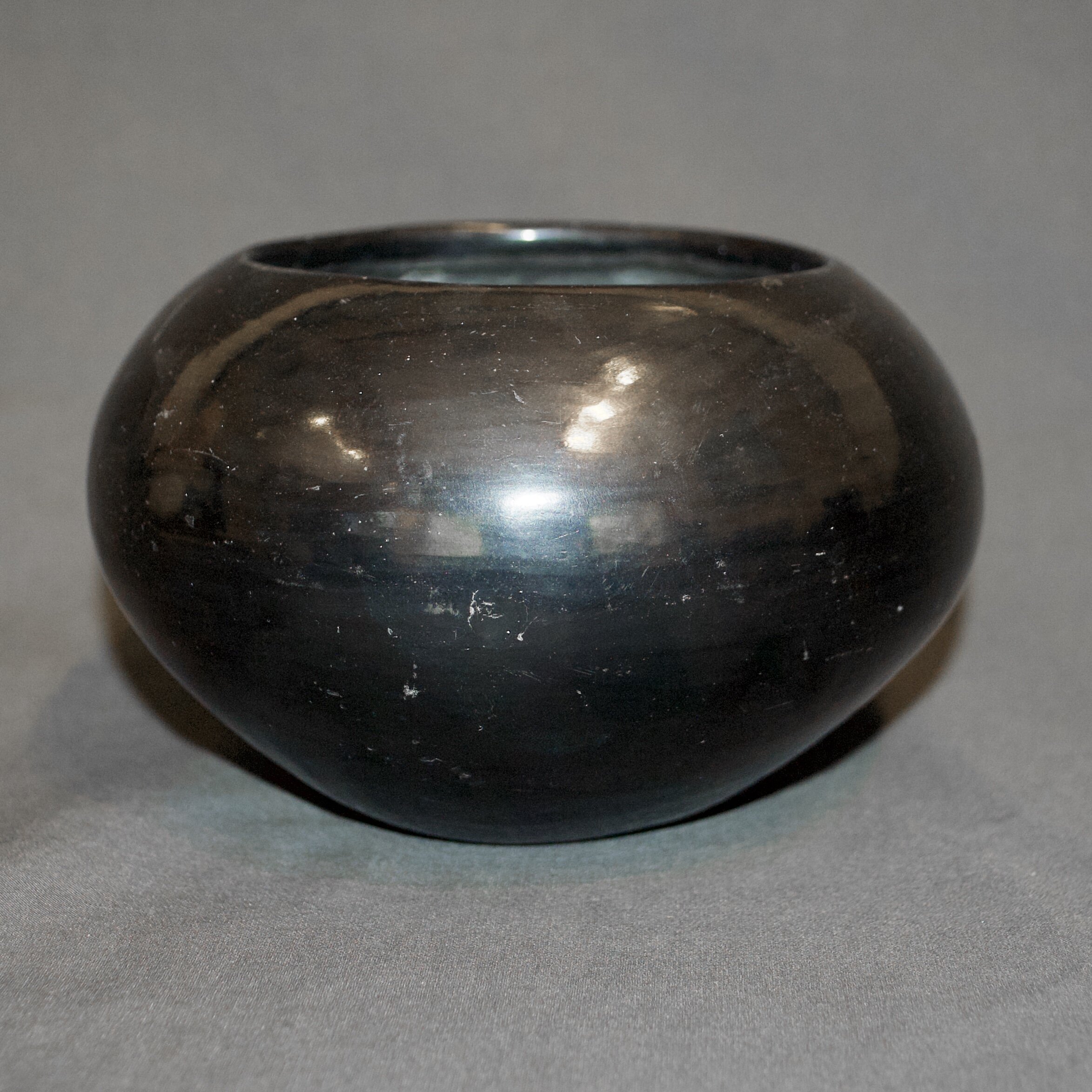
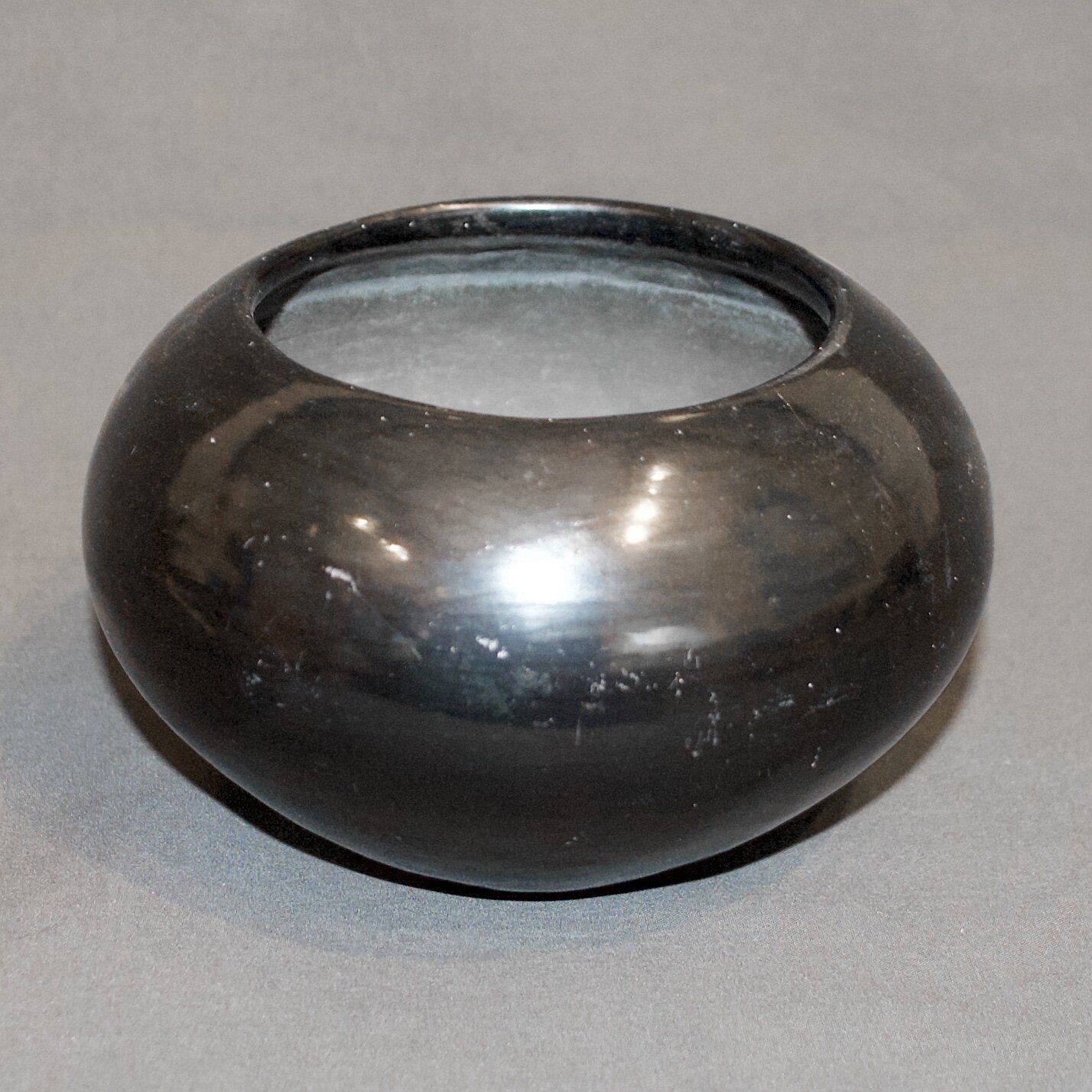
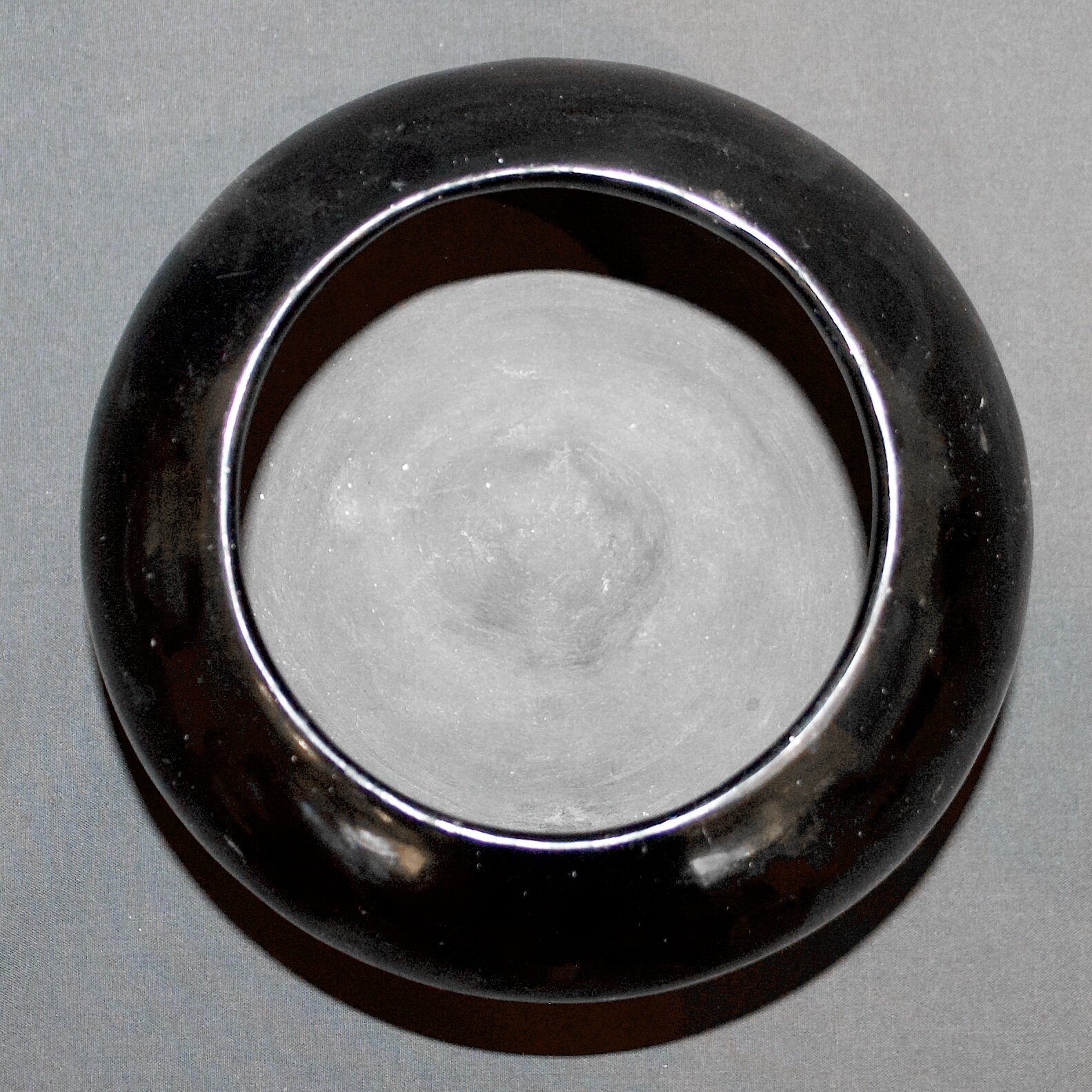
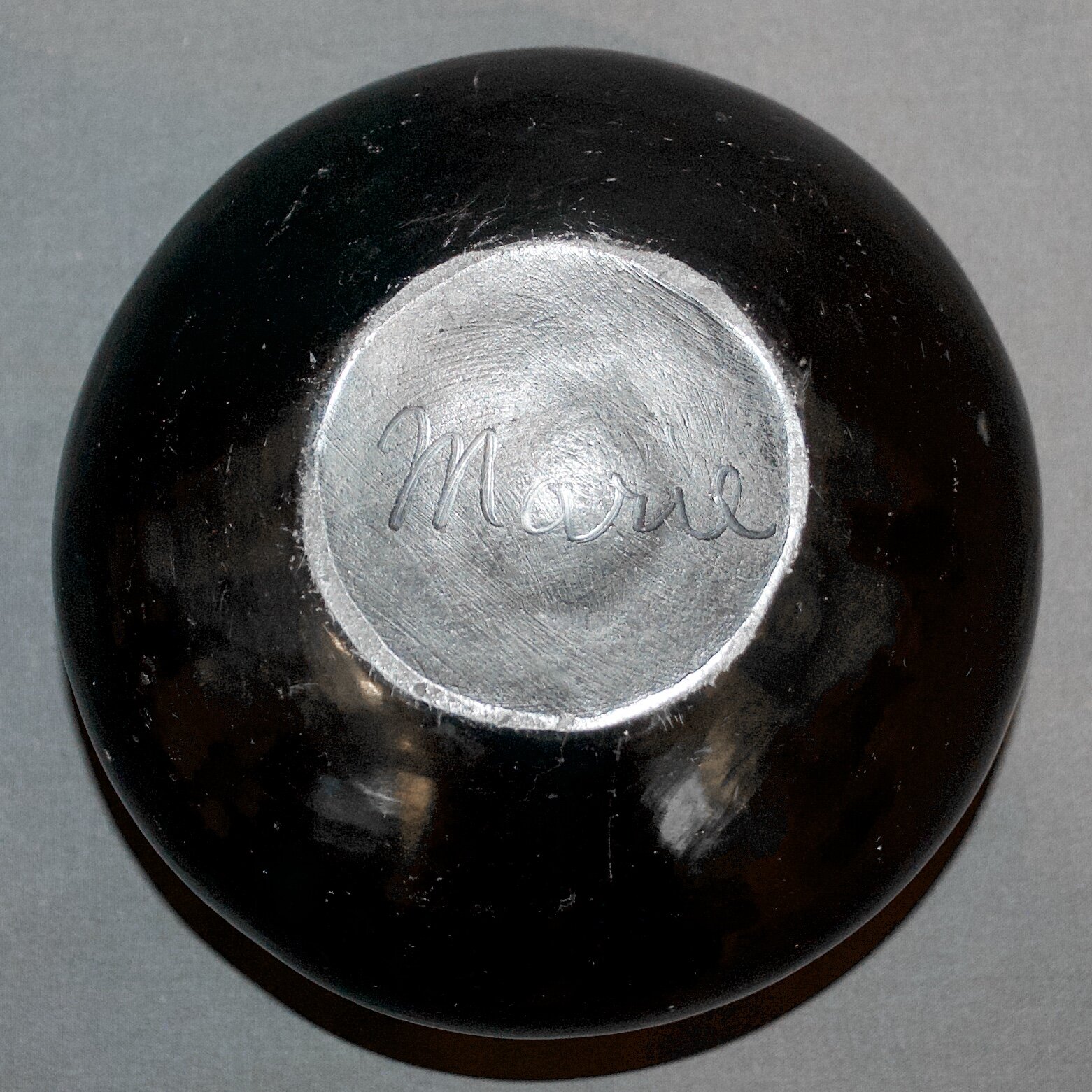
Small Maria Martinez Black Ware Pot
Small hand-coiled, traditional pueblo black on black, San Ildefonso Pueblo pottery bowl by Maria Martinez circa. 1920s to mid 20th century, signed Marie, shows some signs of wear. Approx: 5" round x 3 1/8" high
Small hand-coiled, traditional pueblo black on black, San Ildefonso Pueblo pottery bowl by Maria Martinez circa. 1920s to mid 20th century, signed Marie, shows some signs of wear. Approx: 5" round x 3 1/8" high
Maria Montoya Martinez
Maria Montoya Martinez of San Ildefonso Pueblo, New Mexico is recognized the world over as a matriarch of Native American pottery. As a young girl. she would watch her aunt Nicolassa make pottery and was encouraged to try various techniques and styles. As a teenager, she would spend time at Santa Clara pueblo with her friend, Sara Fina Tafoya, where she was surrounded by potters.
In 1904 she married Julian Martinez (1887-1943), a painter who was one of the first Rio Grande artists. Together they made a phenomenal team. Maria made the pottery and Julian painted the designs. Later in the same year that they were married, they demonstrated pottery making at the St. Louis Worlds' Fair, where they sold their pots for $1 a piece.In 1918-1919 they created a new style of pottery, the highly polished and matte painted “black-on-black” style. This innovation quickly became among the most popular styles of southwestern pueblo pottery and made them famous.
Maria Martinez pottery signatures varied over her career. After Julian passed away Maria continued to make pottery and it was then painted by her daughter-in-law Santana Roybal Martinez (1909-2002), mostly known simply as Santana, and then later by her son, Popovi Da (1923-1971). Maria was known to have signed "Maria" in combination with Santana between 1954-1956. Prior to that time she signed her name "Marie" when working with Santana (who executed the painting while Maria formed the pots).
